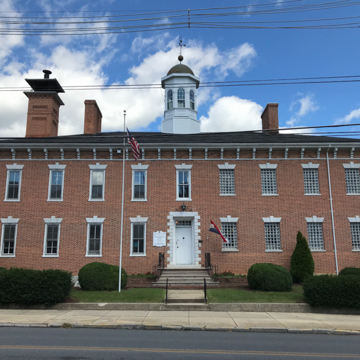You are here
Franklin County Historical Society–Kittochtinny (Franklin County Jail)
The link between the outlying settlements and Philadelphia is apparent in this former jail that in its overall proportions and central cupola is based on Robert Smith's pre-Revolution Walnut Street Prison. The crowning feature, a giant weathervane in the form of a key, is an early intimation of the expression of purpose that would characterize nineteenth-century architecture. In most counties a jail was among the first structures to be built and was particularly important as the rule of law was extended into the unruly Scots-Irish frontier. The first floor of the jail contained the jailer's quarters, which are trimmed with the type of carving characteristic of German Pennsylvania near Lancaster. The present cornice is Victorian.
Writing Credits
If SAH Archipedia has been useful to you, please consider supporting it.
SAH Archipedia tells the story of the United States through its buildings, landscapes, and cities. This freely available resource empowers the public with authoritative knowledge that deepens their understanding and appreciation of the built environment. But the Society of Architectural Historians, which created SAH Archipedia with University of Virginia Press, needs your support to maintain the high-caliber research, writing, photography, cartography, editing, design, and programming that make SAH Archipedia a trusted online resource available to all who value the history of place, heritage tourism, and learning.







